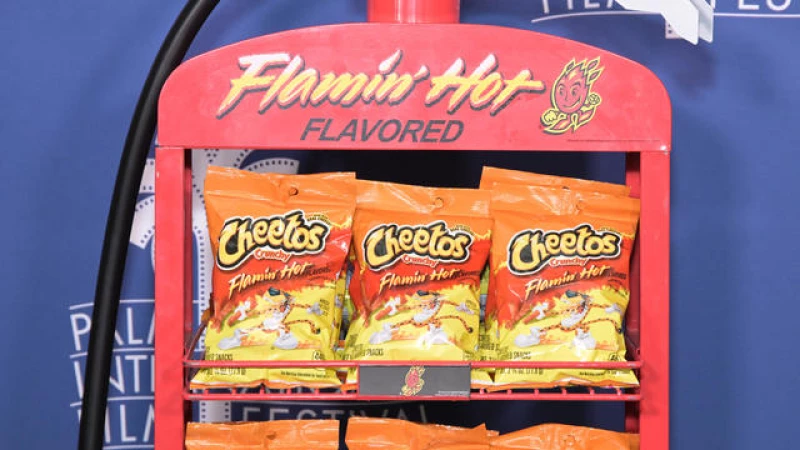California schools are considering banning snacks like Flamin' Hot Cheetos due to their artificial ingredients. A new bill in the state assembly aims to eliminate foods containing additives such as red 40, blue 1, and titanium dioxide, commonly found in child-friendly snacks like chips and cereals.
Popular Cheetos varieties, including the spicy Flamin' Hot version, and other chips like Doritos, contain colorings such as red 40, yellow 5, and yellow 6 – all of which would be prohibited if the bill passes. Additionally, cereals like Froot Loops and Fruity Pebbles contain these artificial dyes along with blue 1. Even candies like Jolly Ranchers use these ingredients.
According to the Center for Science in the Public Interest, some soups, mac and cheese brands, and other foods may contain titanium dioxide, a substance they have been advocating against along with synthetic dyes.
Current California law mandates that the state's education department must adhere to nutritional guidelines when providing food at schools. Additionally, free lunch and breakfast are offered to all students from kindergarten to 12th grade in the state.
The current rules state foods given to students must be a fruit, vegetable, dairy, protein or whole grain item. The rules also set standards for calories, sugars and fats in these foods.
Democratic California Assembly Member Jesse Gabriel wants to amend the rules so that all schools – public, charter or a state special school – cannot sell or provide foods with blue 1, blue 2, green 3, red 40, titanium dioxide, yellow 5 and yellow 6.
In a social media post announcing the bill, Gabriel said these chemicals are "linked to serious health concerns including DNA damage, cancer, hyperactivity, and neurobehavioral issues from food served to students."
A 2012 study by the National Institutes of Health found red 3 causes cancer in animals and red 40, yellow 5 and yellow 6 have been found to be contaminated with carcinogens like benzidine, which can increase risk of developing cancer.
Blue 1, red 40, yellow 5 and yellow 6 cause hypersensitivity reactions – an exaggerated immune response to allergens – and rodent studies of yellow 5 were positive for genotoxicity, which cause cell mutations that could lead to cancer, according to NIH.
NIH recommended that since these dyes don't improve nutrition of foods, they should be removed. They said, however, more toxicity testing is required.
The Food and Drug Administration approves the use of dyes in foods and requires evidence that a color additive is safe before being added to products. It also requires manufactures to include on product labels which of these ingredients are used.
The administration has sent out warning letters when dye usages were not disclosed – like when yellow 6 in dehydrated papaya or blue 1 in noodle products were undeclared. They have a list of products have have received warnings for not declaring use of these ingredients.
The FDA says they cannot be absolutely certain of the risk of these ingredients due to limits in sciene. "Therefore, the FDA must determine – based on the best science available º if there is a reasonable certainty of no harm to consumers when a color additive is used as proposed," the administration says. "The FDA does not approve the use of a color additive that is found to induce cancer in people or animals."
The FDA looks at several factors when considering these ingredients, including the amount that would typically be consumed and the immediate and long term effects.
In 2023, California became the first state to ban four food additives – red dye no. 3, potassium bromate, brominated vegetable oil and propyl paraben – according to CBS San Francisco.
These additives are commonly used in various food products, such as Peeps, the sugar-coated marshmallow treats often associated with Easter. Initially, a version of the bill included titanium dioxide, a substance also found in Skittles, but it was later removed from the legislation following amendments in the Senate.
Interestingly, the European Union has implemented a ban on several food additives that are currently permitted in the United States. These banned additives include titanium dioxide, potassium bromate, brominated vegetable oil, azodicarbonamide, and propylparaben.







